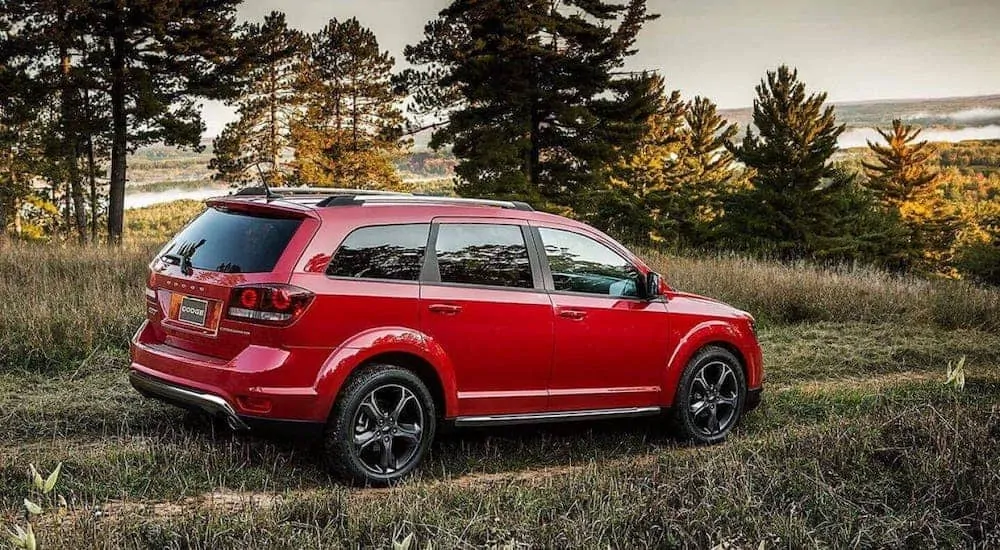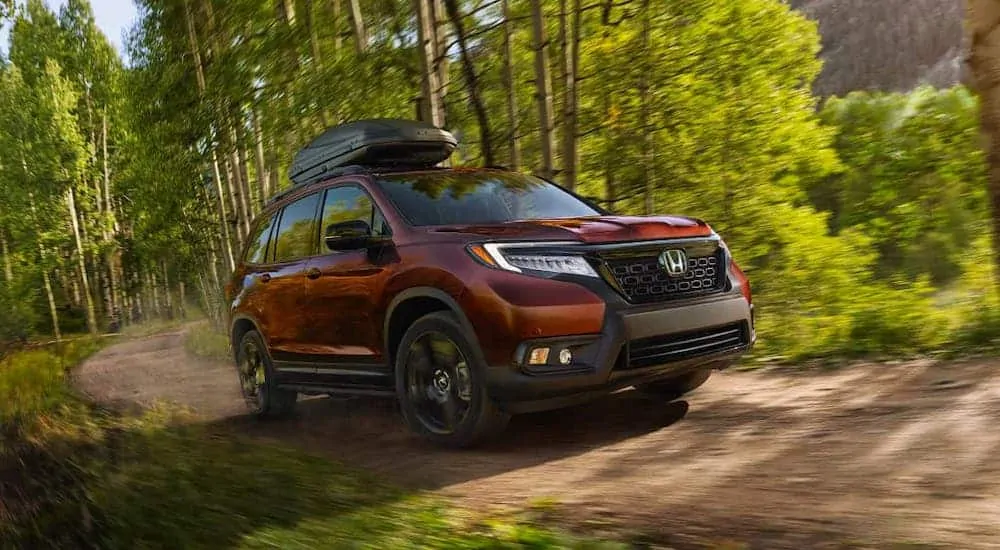If you’re shopping for an SUV, what kind of characteristics should you look for? A great engine, solid interior features, a variety of safety gear? There are a lot of things to consider when buying an SUV, which for some, can make buying a bit of a challenge. Although if you’re looking for a top-of-the-line midsize model, chances are you may be considering either the Honda Passport or the Dodge Journey. Visit with any Dodge or Honda dealer, and you’ll likely get swayed one way or the other. Instead, in this article, we’ll give you the full rundown of what each of these models brings to the table, and provide a transparent summary of which SUV might be the better fit for your automotive needs. From the engine humming beneath the hood to the level of available tech features, we’ll review it all and more to ensure that you make an entirely educated car buying decision.
A Quick Look at Pricing
When shopping for an SUV, the price you pay and the available trim configurations matter. Even the most well-built SUV can be made undesirable by a poorly set price range. Fortunately, both the Honda Passport and the Dodge Journey come in at a reasonable price point, giving drivers access to a midsize SUV without breaking the bank.
The Dodge Journey has a starting MSRP of $23,675, although drivers will only get two basic trim options to choose from the SE Value and the Crossroad. Meanwhile, the Honda Passport is the more expensive option here, with an MSRP of $31,990. Although, this higher cost comes with the benefit of a far greater spread of tech, performance, and safety features. Options include the Sport, EX-L, Touring, and Elite.
While the Dodge Journey is far cheaper, this doesn’t always equate a better buy. In order to determine which is the clear winner here, we’ll have to dig a bit deeper into the details that separate these two vehicles.

Lifting the Hood
Performance ought to take top importance for midsize SUV drivers. The midsize SUV body styling is typically intended to have a set of powertrains that deliver on a promise of substantial power and torque. And while many other models within the Dodge family lineup come well equipped in terms of power, the Dodge Journey feels a little stilted in the way of performance. There once was a time when this SUV was equipped with a V6 engine, but for the 2020 model, that beefier engine has been put to the wayside. Instead, the only engine available in the Dodge Journey is a small, but at least reasonable 2.4-liter inline-4 that delivers 173 horsepower and 166 lb-ft of torque. For a seven-seat midsize SUV, we would’ve liked to see at least another, more robust alternative powertrain, and the four-speed automatic transmission doesn’t help things too much either. Although, thanks to the small engine, transmission, and front-wheel drivetrain, the Dodge Journey does earn decent gas mileage for its size, garnering an estimated 19 MPG in the city and 25 MPG on the highway.
Meanwhile, the performance of the Honda Passport is much better at providing drivers the power needed to haul a car of such size. Even though the Honda Passport has a max carrying capacity of five passengers, this SUV starts with a reasonably strong 3.5-liter V6 that produces 280 horsepower and 262 lb-ft of torque. A 9-speed automatic transmission is partnered alongside the V6 engine, and the Passport can be equipped with front-wheel or all-wheel drive.
If you are interested in off-roading, the Honda Passport is certainly the superior choice, as all-wheel drive models can navigate on nearly any terrain thanks to the drive mode selector, which has settings for Snow, Sand, Mud, and Normal. The 8.1 inches of ground clearance isn’t half bad either, providing drivers with reasonable peace of mind on trails. Gas mileage for the Honda Passport exists within a similar range as the Dodge Journey, though, earning 20 MPG in the city and 25 MPG on the highway.
So, as you may be able to tell, the Honda Passport is the superior choice when it comes to performance. However, there is more to a great SUV than just a good engine build.
A Review of Interiors
Cabin spacing and comforts are a huge deal for any car, although this is typically an essential feature of SUVs. Intended to be roomy with a variety of modern amenities, the ideal SUV ought to feel pretty abundant in more ways than one. In this capacity, the Dodge Journey is the superior option in terms of people transport, as up to seven people can fit into the rear seats. Cargo space also reaches a maximum of 67.6 cubic feet, which is pretty substantial but falls short of what you can find in the Honda Passport.
While the Honda Passport only provides room enough for five passengers, there is a serious amount of cargo space to be taken advantage of. When all seats are filled, there already is a good amount of cargo room measuring at 41.2 cubic feet of cargo space, but when you fold those seats down, spacing expands to 77.9 cubic feet. So, in terms of interior space, if you’re looking for people transport, the Dodge Journey may satisfy, but if you’re looking for real utility, the Honda Passport might be the better fit.
Technology is another huge deal for the interior of an SUV, whether that means the infotainment system or the level of safety features packed inside. The Dodge Journey starts simple, with a 4.3-inch infotainment touchscreen that is connective via Bluetooth and has a satellite radio function as well. A six-way power driver’s seat comes standard, as does a nifty tri-zone climate control. Upgrade to the Crossroad trim, and you’ll get leather seating, a power sunroof, and a big 8.4-inch infotainment touchscreen that comes with Apple CarPlay and Android Auto compatibility. Upgrade a step further, and you’ll get remote start and heated front seats. In terms of safety technology, the Dodge Journey comes with the basics of entry-level models. While you can upgrade the safety package, things only go so far as rear parking sensors.
The Honda Passport starts at a similar level as the Dodge Journey in terms of interior technology. The base infotainment screen is a 5.0-inch display that is only connective via Bluetooth and unfortunately doesn’t have touch functionality. However, the standard tech package does come with keyless ignition, and two conveniently placed USB charging ports.
Upgrade the Honda Passport though, and you’ll find a slew of more premium features which include a much bigger 8.0-inch touch-activated infotainment system, heated seats, a moonroof, leather upholstery, and an acoustic windshield. Take things another step further, and in the Elite trim, you’ll find near luxury-level features, including a wireless smartphone charger and a full-power outlet. Safety technology is abundant in the Honda Passport, as even base models get automatic emergency braking standard. And if you upgrade this standard safety package, the Honda Passport can be fitted with active lane control, adaptive cruise control, and even blind-spot monitors.
So, while the Dodge Journey offers a return to basics in terms of technology, with options to upgrade, it is the Honda Passport that remains modern no matter what model you buy.
Deciding Between the Two SUVs
So, should you opt for the Dodge Journey or the Honda Passport? Well, it all depends on your automotive preferences; that said, if you’re looking for a more well-rounded and modern SUV driving experience, the Honda Passport is the path to follow. With its robust set of safety features, bigger engine, and well-balanced interior, the Honda Passport offers a ride that is worth checking out in person. Although, if you want to see for yourself, we recommend that you visit your local Dodge or Honda dealer to get an up-close look at both of these SUVs.






